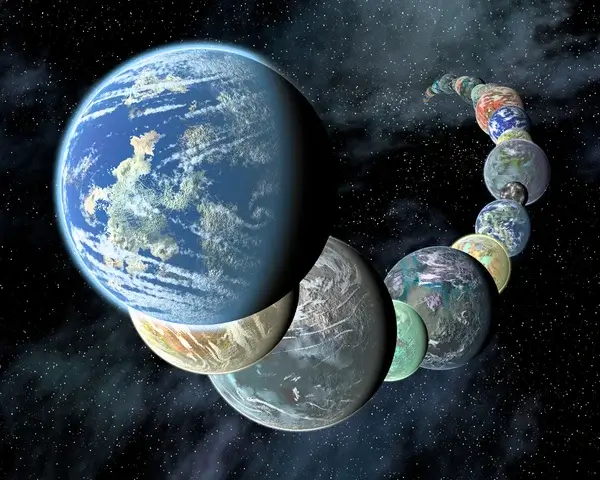
The vastness of space holds countless mysteries, and exoplanets, planets orbiting stars beyond our own Sun, are among the most captivating. Each one holds the potential to unlock secrets about the universe and offer clues about the possibility of life beyond Earth. Here's a glimpse into some of the most amazing exoplanets discovered so far, compared to our own planet:
Super Earths:
-
Gliese 581g: Nicknamed the "Goldilocks planet," this exoplanet lies in the habitable zone of its star, meaning it could potentially harbor liquid water on its surface. Its mass is about 3 to 4 times that of Earth, suggesting a rocky composition with the potential for a thick atmosphere. Imagine a world significantly heavier than Earth, with a dense atmosphere that might support different lifeforms.
-
Kepler-186f: This exoplanet is slightly larger than Earth and orbits its star within the habitable zone. Interestingly, it may be tidally locked, meaning one side always faces the star while the other remains in perpetual darkness. This could lead to dramatic temperature differences and unique ecosystems on each side of the planet.
Gas Giants:
-
WASP-121b: This hot Jupiter, located incredibly close to its star, is tidally locked and experiences scorching temperatures exceeding 2,200 degrees Celsius. Scientists believe its atmosphere is made up of vaporized metals like iron and titanium. Imagine a world where iron rains from the sky due to the extreme heat!
-
HD 189733b: This exoplanet boasts winds that can reach speeds of 7,000 kilometers per hour, much faster than anything on Earth. It's believed to be a "glass planet," with a surface made of molten glass due to its extreme temperatures. Picture winds that could blow away mountains on Earth!
Rocky Worlds with Strange Atmospheres:
-
55 Cancri e: This Earth-sized planet orbits a Sun-like star and is one of the first confirmed rocky planets in the habitable zone. However, recent studies suggest its atmosphere may be composed of thick, toxic hydrogen cyanide gas, making it inhospitable to life as we know it. Imagine Earth covered in a poisonous fog that would instantly kill any living organism.
-
K2-18b: This exoplanet is the first confirmed discovery of water vapor in the atmosphere of a planet outside the solar system within the habitable zone. However, its atmosphere also seems to be rich in hydrogen, which could lead to significant water loss over time. This highlights the delicate balance needed for life to exist.
Planets with Multiple Suns:
-
Kepler-16b: This exoplanet orbits two stars, experiencing both solar eclipses and double sunrises. This unique environment could lead to dramatic temperature swings and complex weather patterns. Imagine witnessing two suns rising in the sky and experiencing both day and night twice as often as on Earth.
-
HD 188753 Ab: This exoplanet orbits three stars, creating a complex and dynamic system with unpredictable gravitational forces. This highlights the vast diversity of planetary systems that exist beyond our own. Imagine a world where the sky seems to be filled with multiple suns, creating a truly celestial spectacle.
These are just a few examples of the amazing exoplanets scientists have discovered. Each one offers valuable insights into the formation and evolution of planetary systems, and they continue to fuel our curiosity and search for life beyond Earth. The exploration of exoplanets is still in its infancy, and there are countless more worlds waiting to be discovered and studied. As our technology advances, we can expect to uncover even more amazing and unexpected exoplanets, potentially revealing the existence of life and challenging our understanding of the universe.
Check this Amazing Video Demonstration of Exoplanets
